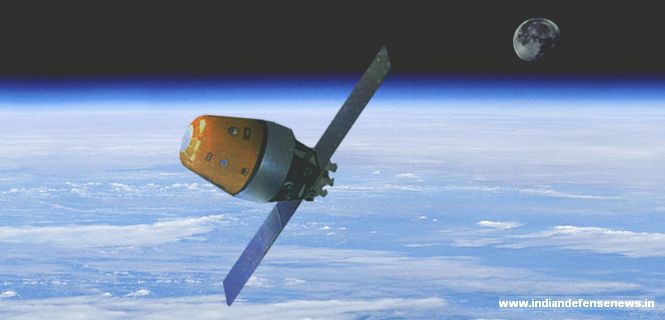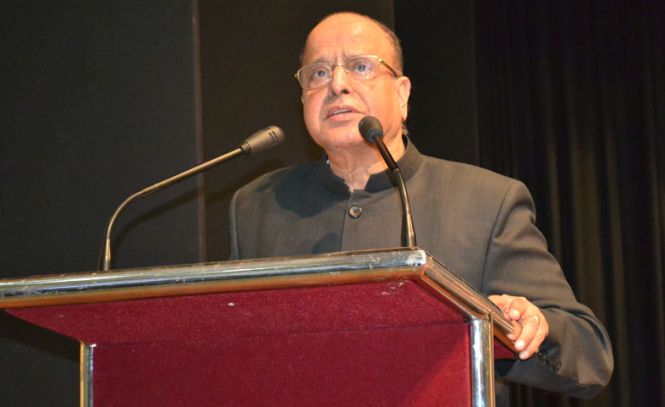The Future of ISRO – Get more Private Industries Involved and Encourage Academic Participation
ISRO's Conception of the Human Rated Orbital Vehicle. design and testing of OV is in progress
by P.V. Manoranjan Rao
Former Chairman of the Indian Space Research Organisation Dr K Kasturirangan, on the future of ISRO, the need to interface with university systems as well as consortium of industries and the viability of an Indian human space mission.
It is time we start looking at ISRO in a very different perspective. We cannot go on producing satellites and launch vehicles which are operational within the system. Right now, our manpower is about 15,000 to 18,000 or that kind of a number; it should not grow more than 20,000 to 22,000 whereas the number of missions should grow by three to four times in the coming five to eight years. Obviously, this can come only if there is an external capacity that is built and the whole mechanism of institutionalising, and how to do it outside ISRO, are well planned and ensured. Industries have been meeting ISRO’s requirements very well. With proper policy framework for ISRO in place, the industry can be allowed to use our launch and test facilities. This is yet to take place. It’s not purely outsourcing.
Industries will have to get missions, get the stakeholders and user community and also do business with outside world. And for that, it has to be more than just being an outsourcing system. So you have to really create a parallel ISRO within the industrial system in this country. This is important.
Dr Kasturirangan
Yes, you need to focus on R&D, proof of concept missions, international collaborations, human space mission as and when it takes place, planetary programmes, etc. This should be all within the scope and the overall agreed programmes on space, which should be the mandate of ISRO. But the moment an operational system is created, a consortium of industries should come and take it over and also do business on that basis. So, that is what I would say should be the next attempt.
On frustrating Moments
Frustration comes in because you have expectations and you don’t meet those. Expectations from ISRO, particularly from outside, are great; many times it is difficult because people think that a great thing is happening in this country and they do not have a benchmark, so their expectations are high. Within ISRO, we know there is a gap between what we are capable of and what we are doing.
Then we get frustrated because we think that we should be doing more. Take for example remote sensing applications: in ISRO we have major centres doing this. We have operationalised some applications. We also have Regional Remote Sensing Centres. Very good. But when we see what systems like Google are doing, we know we are far from them. We should have gone ahead without any constraints on using remote sensing data.
The second thing is the non-proliferation of space science into the university system. I think we have got very limited interface with university systems. You look at planetary mission like Chandrayaan. How many university papers do we see? Practically nothing. It was not pushed with passion. Now Mangalyaan! It was called as a test flight for technology. I was amazed at the way in which these things are being said outside. Planetary mission is a planetary mission. You will have instruments with which we can do contemporary science. You’re going to have a new look at Mars with respect to its origin, its atmosphere, the climatology system, its implication with respect to Earth. This is the objective.
You need to have technology. Technology always is driven by science and this technology is always higher than the technology you need for day-to-day and down-to-earth applications. So this is the loop you should really look at. So please make sure that this is a correction you need to make when you talk about planetary missions. ISRO will not have a technology demonstrator for planetary missions. It will be always science that will drive it.
In the process it will develop new technologies. Those new technologies will further improve our ability to explore and at the same time used for improving remote sensing and other kind of satellite technologies for down-to-earth application. So this is the way we should look at planetary missions and make sure that we get an opportunity to demonstrate that we’re able to go there and do experiment. We’re qualifying ourselves into a global player and try to function in a consortium. If you’re part of a consortium, you should be an equal partner, because you are able to contribute, which you have demonstrated.
And lastly it is also the way in which excitement can be created in the younger generation. This excitement in younger generation is going to be a sustaining factor. Presently not a single university is involved in the Mangalyaan mission. Not a single academic institution is involved. We need to transform the planetary missions as intellectual opportunities even as we demonstrate our technological capability.
Should India go for Human Space Missions?
Yes, in the long run. I think three or four countries have done it. And countries with the resources today are able to do it. Among countries capable of doing it, India can be included. But on the other hand, if you ask me whether we have lost time, we’ve not really lost time, because we build up our applications at a certain pace. So we have a certain way with which we’ve gone about our programme. ‘You need one more ISRO! People give you a wrong impression about the type of resources needed for human space mission. The returns may not be commensurate with the type of money we put into. Returns will never be big. So we need to wait.’ That’s what I told Prime Minister Vajpayee when he asked me about human space flights. But that doesn’t mean that we need not prepare for it. We should certainly aim for increased stature as a spacefaring nation.
Look at the amount of work the US did before embarking on a human space mission there, with their space shuttle. You cannot imagine, the documents they prepared would fill a whole room. The number of scientists, number of engineers, number of strategic planners, the managers – all of them were brought together and separately each one of them churned the concept. That doesn’t mean that concept is applicable to India. You need to go through a similar exercise.
For if Chandrayaan took us four years, a human space mission will take five to six years to specify what the human space mission should be. Then how do you implement it? There are many ways of doing it. You can go on a totally autonomous way. That is number one. Or, try to find out all that is available elsewhere. Exactly like we build a satellite using the components which are available in the market, we don’t build the components. You do an exercise of that kind for human space mission and see what can be bought and what can be built indigenously.
A judicious option has to be exercised very carefully. This is number two. Or we get major subsystems of human space mission and build it, like the Chinese did for the first and second manned capsules. That is number three. And then the fourth one is by enlarging, that is, get a human space mission working from another country. Work on. Like what we did for first cryogenic stage. And then give the Indianness to it. So these are just four approaches to do that. Each one of them, you look at the feasibility, the political considerations, the national priorities, the resources that we need and the time we need.
(Excerpted with permission from From Fishing Hamlet to Red Planet: India’s Space Journey, edited by P.V. Manoranjan Rao, HarperCollins India, 2015)
Source>>










